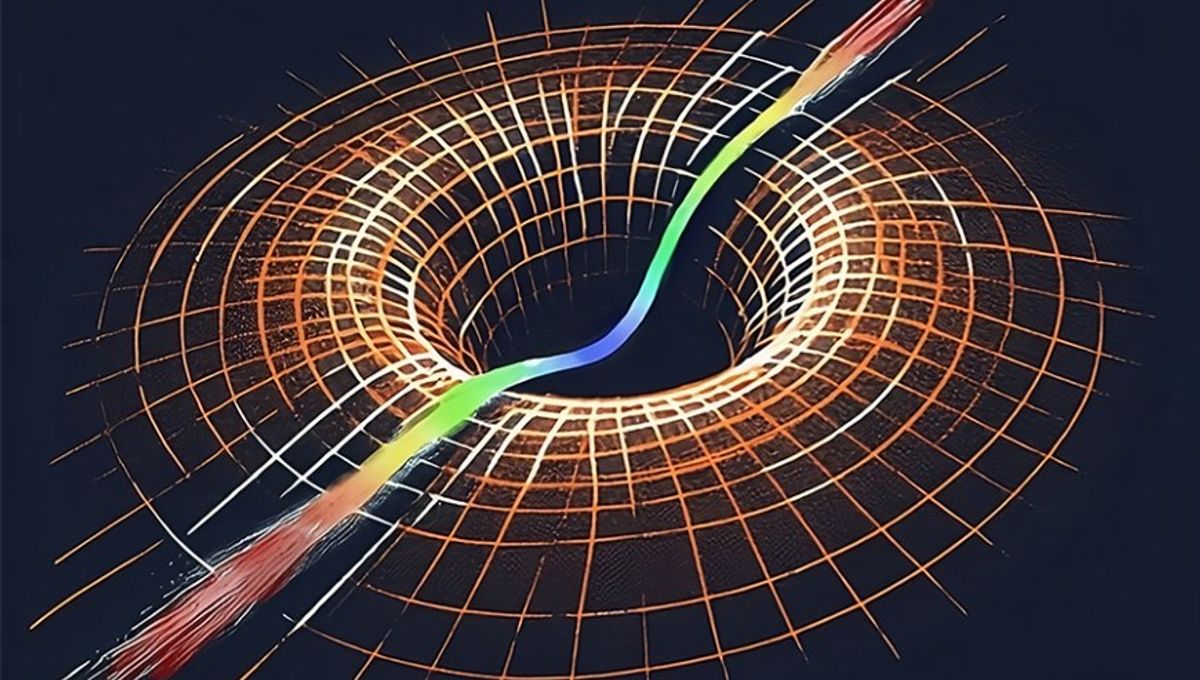
Light is something in our world that we are very familiar with, and yet it can still throw some incredible curveballs when you look at it in detail. A newly discovered one comes from a pretty well-established phenomenon: what happens when light passes through an interface? That could be glass, water, or something completely different. The solution for that has long been established, but scientists have now found something weird going on in the middle.
As light goes through an interface, its speed changes. The solution for the behavior of light on one side of the interface or the other is the well-established standard wave equation. They can be linked with no problem (a piecewise continuous solution) but this still doesn’t explain what happens at the interface itself. There, the wave should experience an acceleration that is not accounted for by the current solution.
Now, an equation has been put forward in the case of a universe with one space dimension and one time dimension.
“Basically, I found a very neat way to derive the standard wave equation in 1+1 dimensions. The only assumption I needed was that the speed of the wave is constant. Then I thought to myself: what if it’s not always constant? This turned out to be a really good question,” lead author Assistant Professor Matias Koivurova, from the University of Eastern Finland, said in a statement.
The team came up with an accelerating wave equation. At first, the solution did not make sense, but the physicists realized that they needed a reference speed: the speed of light in a vacuum. Solving the equation delivered the correct solution both at the interface and on either side of it, but it has one crucial requirement. It needs time to only move forward.
The arrow of time is a concept that is fairly important in science. More often in physics, we talk about the thermodynamic arrow of time. In all isolated systems, entropy increases as time goes on. This clearly gives a direction to time.
This equation, despite being in just one dimension, seems to suggest that the arrow of time doesn’t just come from thermodynamics, but might be an intrinsic property of nature that even propagating light ought to obey.
For the field of optics, solving this equation means solving a long-standing controversy that has confused physicists for years.
“There is this very famous debate in physics, which is called the Abraham-Minkowski controversy. The controversy is that when light enters a medium, what happens to its momentum? Minkowski said that the momentum increases, while Abraham insisted that it decreases,” study lead Professor Marco Ornigotti explained.
Experimental evidence supports both sides, and according to the new equation momentum is conserved thanks to relativistic effects. It only appears to increase or decrease depending on how you are looking at it.
“We found that we can ascribe a ‘proper time’ to the wave, which is entirely analogous to the proper time in the general theory of relativity,” Ornigotti continued.
The work jumps from a specific optical conundrum to a possible fundamental truth of the universe. And if the arrow of time is always going in one direction, we might have to say goodbye to dreams of time travel into the past.
The study is published in the journal Optica.
Source Link: Solution To Complex Light Problem Shows That Time Can Only Go Forward